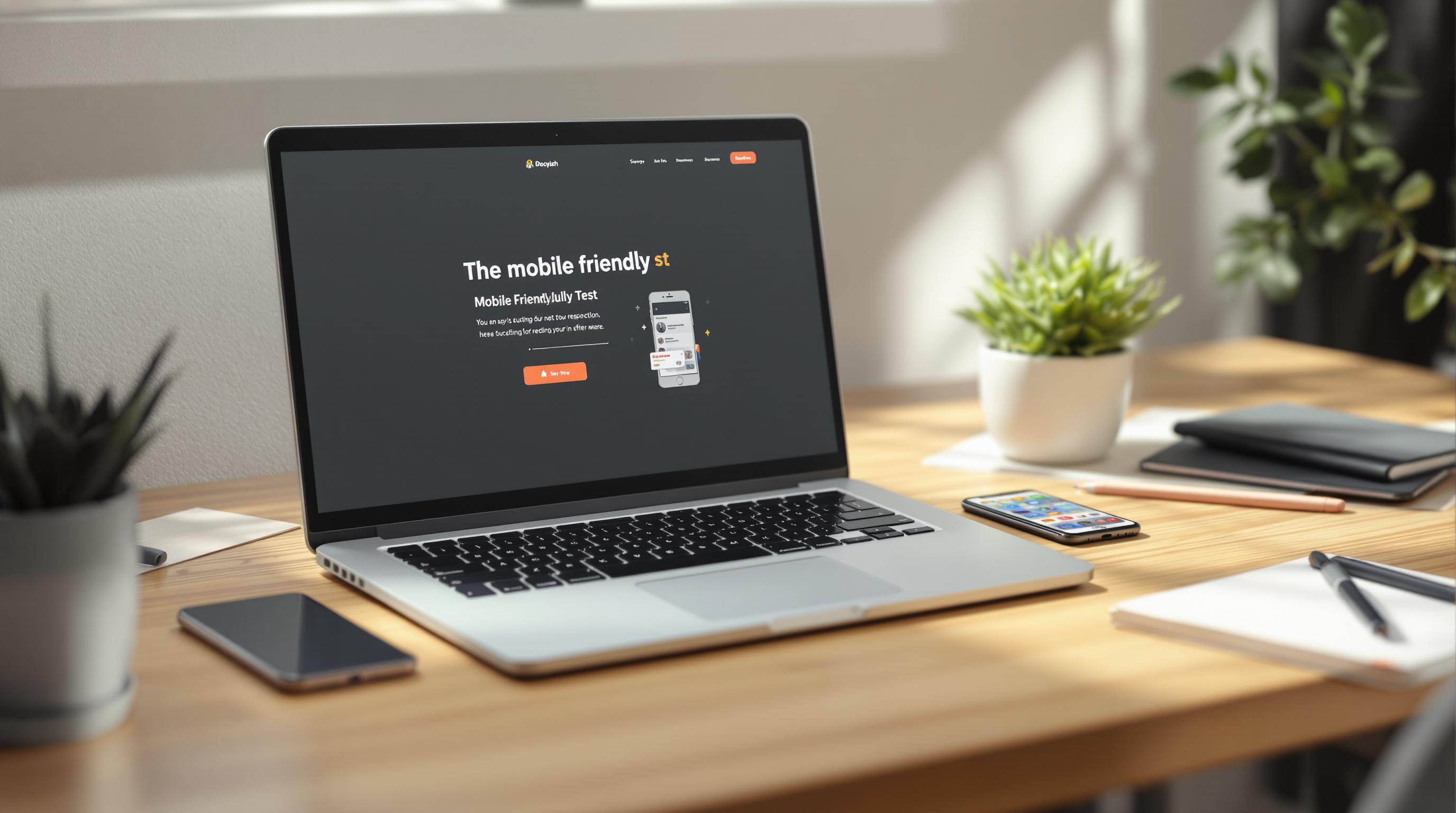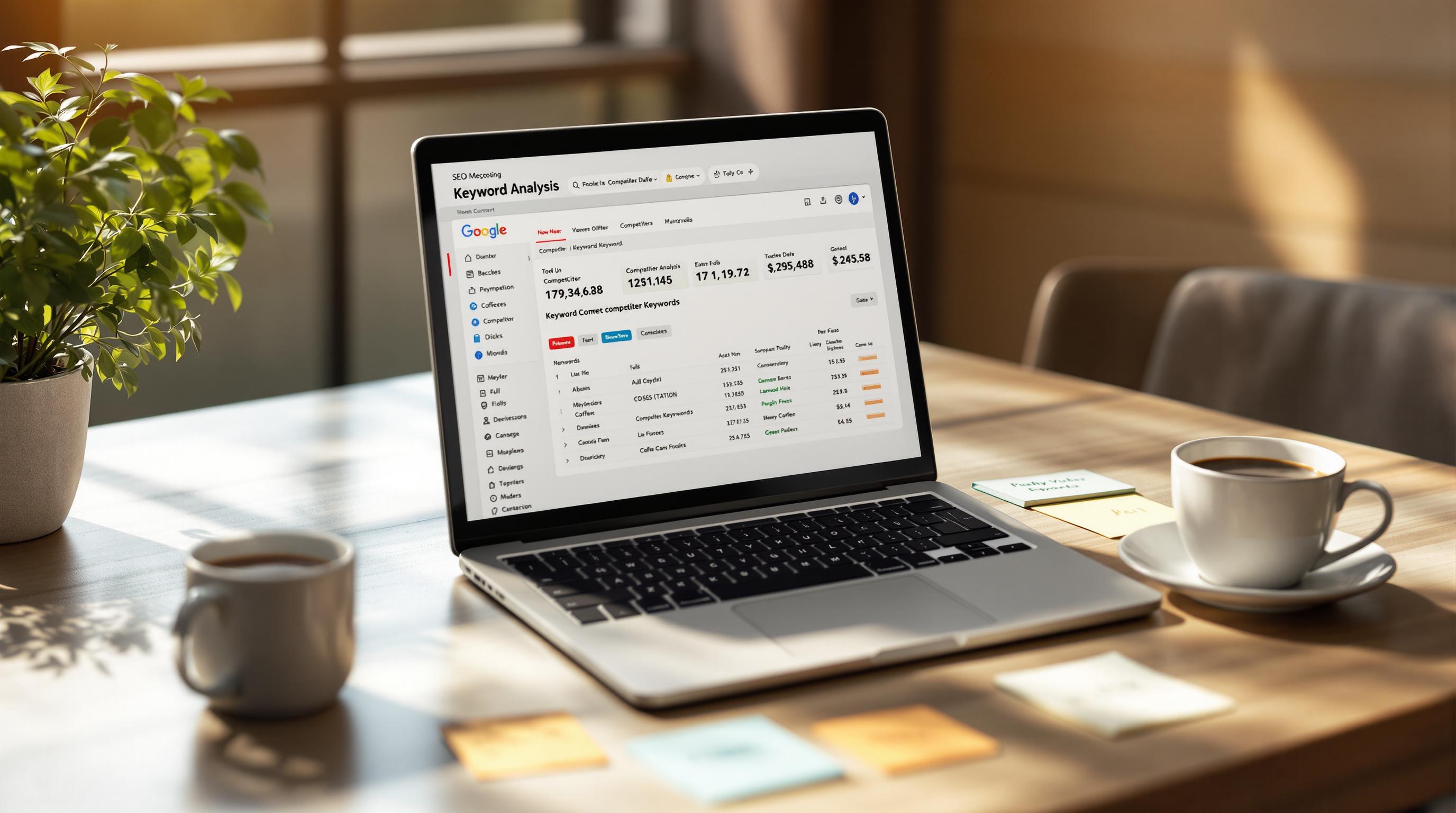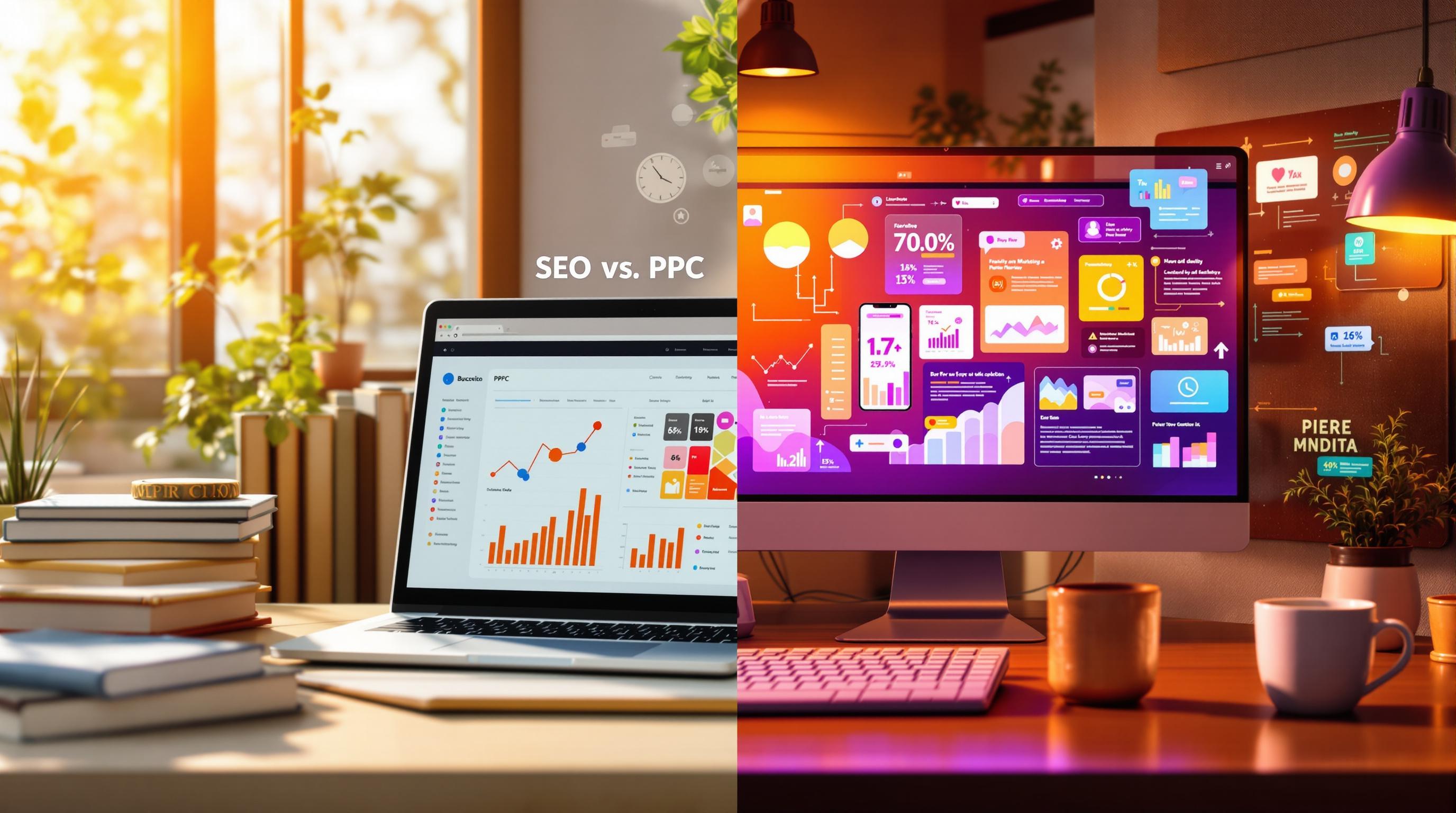Landing page SEO is all about creating pages that rank well on search engines and turn visitors into customers. Here's a quick summary of what you'll learn:
- Keyword Strategy: How to find and use the best keywords for your pages.
- On-Page SEO: Writing strong titles, meta descriptions, and crafting user-friendly URLs.
- Technical SEO: Improving page speed, mobile responsiveness, and Core Web Vitals.
- Schema Markup: Using structured data to enhance search visibility.
- Performance Tracking: Tools and metrics to monitor and improve results.
Key Takeaways:
- Page Speed: A 1-second delay can cut conversions by 7%.
- Mobile Optimization: 63% of organic traffic comes from mobile devices.
- Schema Markup: Can boost clicks by over 150%.
- Conversion Rate: Top-performing pages convert at 5.31%.
This guide combines SEO strategies with conversion techniques to help you build landing pages that rank higher and perform better.
Boost Your Conversion Rates for Landing Pages in 2024
Finding and Using the Right Keywords
Landing page SEO relies heavily on thorough keyword research and smart placement. Did you know that 77.91% of organic conversions come from keywords with three or more words? This shows how crucial it is to zero in on the right search terms.
Keyword Research Methods
To uncover the best keywords for your landing pages, you need to understand your audience's search habits and take a close look at what your competitors are doing. Research suggests that longer keywords - those between 10 and 15 words - get 2.18x more clicks than shorter ones with just one or two words .
Here’s a simple guide to finding effective keywords:
-
Start with Google Keyword Planner
Enter phrases related to your business. For instance, a maple syrup producer in Quebec found unexpected gems like "breakfast condiment" and "handcrafted syrup", in addition to more obvious terms like "handmade syrup" and "locally sourced syrup" . -
Check Out Competitor Keywords
Analyze the keywords your competitors rank for. Nikki Lam, VP of SEO at NP Digital, advises:"It's important to understand why competitors are outperforming you, how they're meeting user needs better, and on the flip side, where they're weak and leaving you an opening to get ahead" .
Whether you’re inspired by competitors or uncovering niche terms, the goal is to align your research with what users are actually searching for.
| Keyword Type | Purpose | Example Usage |
|---|---|---|
| Informational | For education | "how to optimize landing pages" |
| Commercial | For product research | "best landing page builder" |
| Transactional | For purchase intent | "buy landing page templates" |
| Navigational | For brand-specific searches | "hubspot landing pages" |
These categories help you focus on the right keywords for your landing page goals.
Where to Place Keywords
Strategic keyword placement makes your content appealing to both search engines and readers. The trick is to weave keywords naturally into your content while keeping it user-friendly.
Key spots for keyword placement include:
- Page Title: Add your primary keyword here for maximum visibility.
- Meta Description: Use keywords in a way that also makes the description engaging.
- First 200 Words: Place your main keyword early to set the tone .
- Headings: Incorporate keywords into H1, H2, and H3 tags for structure and relevance.
- Image Alt Text: Use keywords to describe images, helping with SEO and accessibility .
- URL Structure: Include your main keyword in the URL for clarity and ranking .
On-Page SEO Elements
Once you've developed your keyword strategy, the next step is to fine-tune your on-page elements for better SEO results. Did you know that 71.11% of websites don't use meta descriptions, and 64.6% have duplicate title tags? This section will show you how to avoid these common issues and use effective optimization techniques.
Writing Strong Titles and Meta Descriptions
Title tags and meta descriptions are like small ads that appear in search results. They play a big role in attracting clicks.
Title tag tips:
- Keep them between 50–60 characters.
- Put your main keywords at the beginning.
- Add your brand name.
- Ensure they accurately reflect the page content.
"Think of meta descriptions as a continuation of your brand and an opportunity to clearly define your USP [unique selling proposition] using relevant keywords. They're little ads and, though the character length can feel constraining, are excellent short bursts of promo."
For meta descriptions, aim for a maximum of 155 characters. Include a call-to-action to encourage users to click.
Building Clear URLs
Creating clear and user-friendly URLs is another key step. A good URL should:
- Be simple and easy to read.
- Include relevant keywords.
- Stick to three levels of hierarchy .
- Use hyphens to separate words.
- Avoid using complicated parameters.
For example, use URLs like example.com/landing-page-builder instead of something cluttered with parameters. Once you’ve cleaned up your URL structure, you can take it a step further with tools like schema markup.
Adding Schema Markup
Schema markup makes it easier for search engines to understand your content. Some businesses have seen their site clicks increase by over 150% after implementing schema . A great example is Bleacher Report, which used schema in 2014 to help an article rank #1 for "sf giants" by adding details like author, date, image, title, and description .
Here’s how to get started:
-
Choose JSON-LD Format
This is Google's preferred format because it's easier to maintain . - Pick the Right Schema Types
| Schema Type | Best For | Key Benefits |
|---|---|---|
| Product | Product pages | Displays price, availability, ratings |
| Service | Service offerings | Shows service area, prices, features |
| Organization | Company pages | Highlights contact info, logo, social links |
| FAQ | Question sections | Enables FAQ-rich snippets |
- Test Your Implementation
Use Google's Structured Data Testing Tool to ensure everything works before going live .
"By helping search engine bots properly crawl and interpret your site's content, schema can further boost SEO performance by displaying your content with greater detail in the search results; referred to as 'rich snippets,' content marked up with schema can render enticing SERP results that can include elements, such as 'thumbnail' images and reviews."
sbb-itb-d7fe25c
Technical SEO Requirements
Technical SEO plays a crucial role in how well landing pages perform in search results. Research shows that adhering to these standards can lower page abandonment rates by 24% .
Page Speed Optimization
Did you know that a one-second delay can cut conversions by 7% ? That's why improving page speed is so important for SEO.
Here’s where to focus:
Image Optimization
- Compress images without losing quality
- Use modern formats like WebP
- Set proper dimensions for images
- Enable lazy loading for below-the-fold content
Server Performance
- Choose a reliable hosting provider
- Use a Content Delivery Network (CDN)
- Minimize server response times
- Enable browser caching for faster repeat visits
"Like us, our users place a lot of value in speed – that's why we've decided to take site speed into account in our search rankings." - Google
Mobile Optimization
Mobile devices account for 63% of organic traffic , and by 2025, the U.S. is expected to have 187 million active mobile shoppers . Optimizing for mobile users is no longer optional - it's essential to staying competitive.
| Feature | Implementation | Impact |
|---|---|---|
| Layout | Single-column design | Easier to read on small screens |
| Navigation | Simplified menus | Smoother user experience |
| Forms | Fewer fields, touch-friendly | Higher conversions |
| CTAs | Place above the fold | Better engagement |
| Media | Compress and optimize | Faster load times |
Core Web Vitals
User experience isn’t just about speed and mobile design - it’s also shaped by Core Web Vitals metrics, which directly affect search rankings .
Key Core Web Vitals Metrics:
1. Largest Contentful Paint (LCP)
Aim to load your main content within 2.5 seconds by:
- Optimizing large elements
- Reducing server response times
- Leveraging effective caching
2. Interaction to Next Paint (INP)
Keep interaction delays under 200 ms by:
- Minimizing JavaScript usage
- Removing unnecessary scripts
- Using efficient event handlers
3. Cumulative Layout Shift (CLS)
Keep CLS below 0.1 by:
- Reserving space for dynamic content
- Defining fixed dimensions for media
- Avoiding unexpected layout shifts
Keep in mind that every additional third-party script can add 34.1 ms to your load time . BrightSide SEO specializes in schema optimization to improve technical performance and maintain fast page speeds, helping websites climb the search rankings.
Tracking SEO Results
Effective tracking can enhance landing page performance, with businesses reporting up to a 30% boost in conversions .
Setting Up Tracking Tools
To monitor SEO efforts effectively, use tools like GA4 and Search Console. GA4 focuses on user behavior and engagement, while Search Console delivers insights into search performance.
| Tool | Primary Metrics | Key Benefits |
|---|---|---|
| Google Analytics 4 | Page views, engagement time, conversions | Real-time user behavior |
| Search Console | Search rankings, impressions, CTR | Search performance insights |
| Hotjar | Heatmaps, session recordings | Visual behavior analysis |
| Quattr | Competitor analysis, keyword clusters | SEO-focused insights |
"Landing pages serve as the first impression for your target audience and play a pivotal role in addressing SEO requirements." - Saket Mittal, Marketing Analyst at Quattr
Important Performance Metrics
The average conversion rate across industries stands at 2.35%, while top-performing sites surpass 5.31% .
Key Metrics to Track:
- Conversion Rate: Measures how effectively visitors are turning into leads or customers.
- Average Engagement Time: Tracks how long users stay on your page.
- Page Load Speed: Target 2–5 seconds for optimal user experience .
- Bounce Rate: Indicates how many users leave without interacting further.
- Session Source: Shows where your traffic originates.
- New vs. Returning Visitors: Helps gauge audience loyalty and growth.
"Conversion rate is the most crucial metric. It measures how well your landing page converts visitors into leads or customers." - Axel Lavergne, Founder of Reviewflowz
These metrics provide a foundation for testing and refining your strategies.
Testing and Improving Results
A/B testing is a powerful way to fine-tune landing pages and improve SEO outcomes. Experiment with different elements such as:
- Title tags and meta descriptions
- Content length and structure
- Internal linking
- Mobile responsiveness
- CTA (Call-to-Action) placement and design
Run tests for at least two weeks, and document both variables and results .
"A/B testing reveals audience preferences and guides improvements to boost conversions." - Contentful
For a more detailed approach, BrightSide SEO (https://brightsideseo.com) offers performance reporting services. Their analysis of Core Web Vitals, engagement metrics, and conversion data can help you make data-driven improvements to your landing pages.
Conclusion
This guide has broken down the strategies that make landing page SEO a powerful tool for driving conversions. By combining technical know-how with content that resonates with users, landing pages can significantly improve performance.
Key Optimization Elements at a Glance
| Element | Impact | Best Practice |
|---|---|---|
| Page Speed | 7% drop in conversions per 1-second delay | Keep load times under 2–5 seconds |
| Mobile Design | Only 50% of landing pages are optimized | Use responsive design |
| Content Quality | Major ranking factor | Focus on user-centered, high-value content |
| Technical SEO | Essential for visibility | Improve Core Web Vitals metrics |
These elements highlight the main strategies covered. For instance, The Economic Times cut its bounce rate in half by enhancing Interaction to Next Paint (INP) .
Taking the First Steps
Start applying these insights to improve your landing page performance.
"The #1 take away should be to always keep the user at the forefront and the search engines second and that will set your website up for success." – Alex Methvin, SEO Growth Marketing Manager, NoGood
Kick off with in-depth keyword research using tools like the Semrush Keyword Magic Tool . A great example is Curry's, which achieved a top spot on Google with a year-round Black Friday landing page .
If you need expert help, BrightSide SEO offers tailored services, including keyword research, technical fixes, and performance tracking. With nearly half of businesses (44%) now using A/B testing software , ongoing optimization is key to staying ahead.


